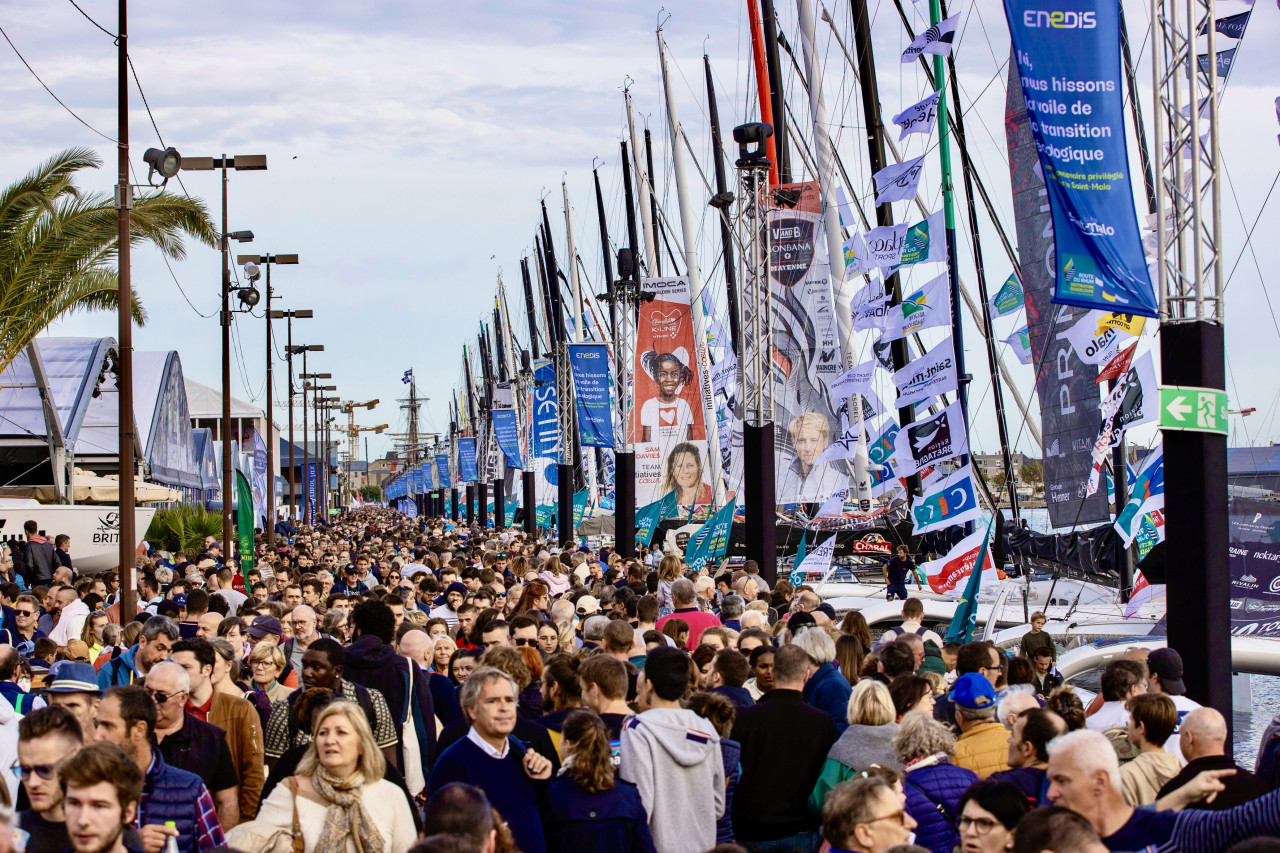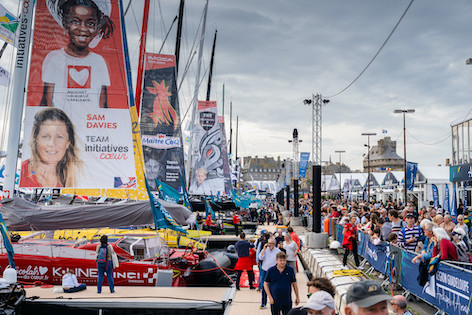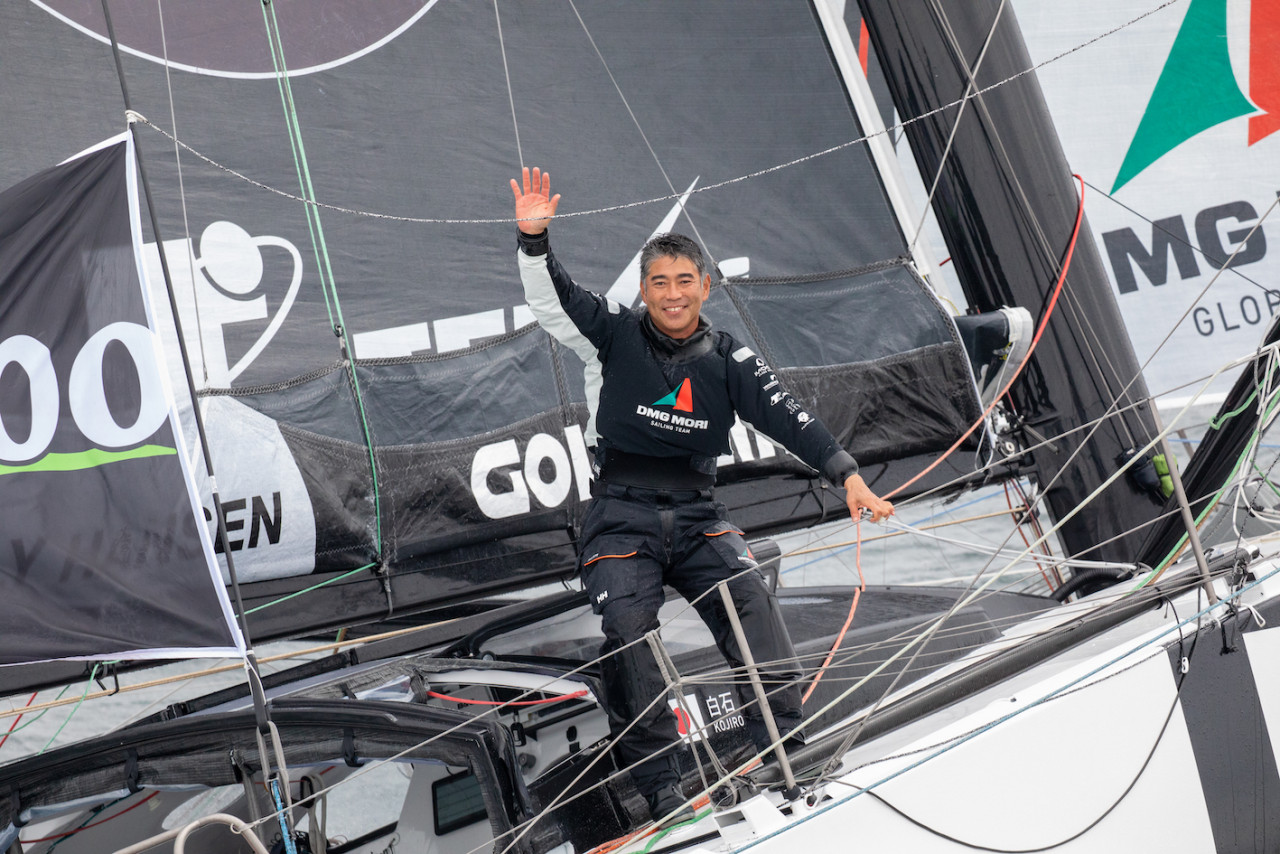To the race village of the Route du Rhum, they come in their thousands…

Every time it is staged, the four-yearly Route du Rhum-Destination Guadeloupe attracts huge crowds who come to the race village at St Malo to view the boats, and to see their heroes, as the skippers prepare for the challenge of sailing the Atlantic solo.
For 13 days, up to the race start on November 6th, the harbours of St Malo buzz with excitement and expectation. This year is no exception and the IMOCA pontoon, where a record-entry of 38 boats are lined up in the Bassin Duguay-Trouin, has seen thousands of visitors arriving every day.
They come to see the latest boats, and perhaps a few old favourites too, and to watch the shore teams – and occasionally the skippers – carrying out their final preparations, or busying themselves with a seemingly endless stream of sponsors and visitors.
 © Alexis Courcoux / #RDR2022
© Alexis Courcoux / #RDR2022
There are boat christening ceremonies to watch, interviews with skippers to listen to on the PA system, merchandising stores to explore and quay-side restaurants to relax in. And they come from all over France and Europe to enjoy this festival of the seas.
“I’m a sailor myself and I follow some of the IMOCA skippers, especially Louis Burton (Bureau Vallée) and Maxime Sorel (V And B-Monbana-Mayenne),” explained Nathalie, 55, from Rennes, about an hour’s drive south of St Malo.
“I follow this race for the human adventure and the personal challenge that it represents for the skippers,”she added. “It’s a remarkable feat what they accomplish and I know I would never be able to do that. I come here every four years and each time the organisation of the village is great, you can see all the boats and the town of St Malo is magnificent.”
Like hundreds of thousands of fans around the world, Nathalie will follow the race online and in the sailing media and she is well-versed in the latest developments in the constantly-evolving IMOCA Class. “You can see all the gear,” she said. “I’m impressed by the boats – they have evolved over the years with the arrival of foils – and the cockpits are more closed than they used to be and they just go faster and faster!”

Standing opposite the only Japanese boat in the fleet – Kojiro Shiraishi’s black and white foiler, DMG MORI GLOBAL ONE – Mélanie and Grégory, a teacher and notary from Caen in Normandy, had come to St Malo with their nine-year-old son, Maxime. In his class at school Maxime had picked Shiraishi as his skipper to follow on the 3,500-mile course to Guadeloupe.
“We came to try to see him,”said Melanie of the Japanese sailor who was busy showing visitors around a boat on which, in 2021, he became the first Japanese sailor to complete the Vendée Globe. “He seems really nice. We like the boat and we sail a little bit so we will follow the start next Sunday,”she added.
Melanie was struck by the contrast that the skippers will experience, between the crush of people on the dockside during the build-up to the start and then the solitude once they get underway. “This week they are surrounded by lots of people and it’s festive, but at some point they will all find themselves alone on the open sea. I’m trying to imagine that myself, but it is difficult,” she said. “These are huge boats in front of us today but, once they’re out at sea, they’ll be very small. It’s fascinating and terrifying at the same time,”she added.
 © Thomas Deregnieaux/DMG MORI Global One
© Thomas Deregnieaux/DMG MORI Global One
Michel and Françoise, a retired teacher and florist respectively who are also from Rennes, had come to St Malo with their grandson, Emilien. “We came to see the boats and to show him around – the equipment is crazy and we feel very small next to these boats,” said Françoise who visited the race village for both of the previous two Route du Rhums in 2014 and 2018.
“The village is very nice – it’s a big organisation,” she continued. “We’re going to follow the race every day they are at sea. We follow Kevin Escoffier (the St Malo-born skipper of Holcim-PRB). These boats are very intriguing. We’d love to see inside one, how they live, how they sleep – it’s hard to imagine the space inside.”
Like many others on the dockside in St Malo this week she was fascinated by the challenge of racing solo on a high-powered racing yacht across the wide open wilderness of the Atlantic. “It’s completely crazy to leave on your own like that,” she said. “We imagine that you have to settle into the race quickly, adapt to the conditions quickly and avoid breakages – we’ll be following all that!”
As always in St Malo at this stage in the build-up, the big question is what sort of weather picture the 38 IMOCA skippers will face when they finally break free and set sail on Sunday. The last two editions of the Route du Rhum saw a difficult start to a race which has a reputation for being a boat-braker in its early stages. In the next few days we will begin to see whether this year is going to be more of the same or whether the 2022 edition of this classic, that is such a firm favourite with the public in France, will set off in more benign conditions.
Ed Gorman
Teams info
The Transat CIC: a spectacular start!
Brittany turned on its best Spring sailing weather – sunshine, puffy cumulus clouds and a decent 10-15kts of Westerly wind – to send the 48 strong Transat CIC fleet on its way from Lorient towards New York for the start …
•••Charlie Dalin: Raring to go on his first solo The Transat CIC
It’s good to see Charlie Dalin back where he belongs, at the helm of his almost brand new Guillaume Verdier IMOCA, Macif Santé Prévoyance, ready to take on the north Atlantic in The Transat CIC.
•••